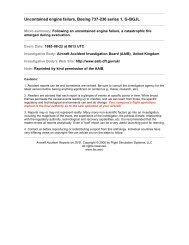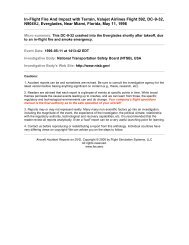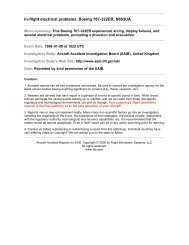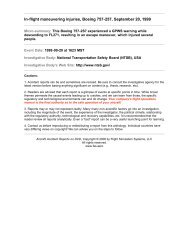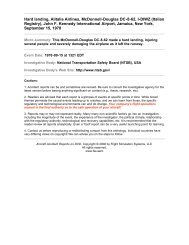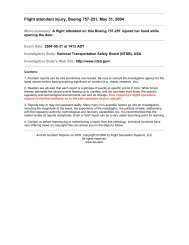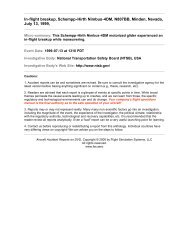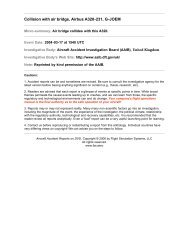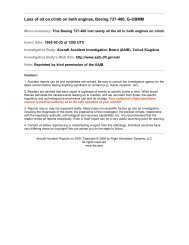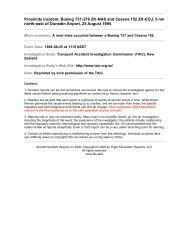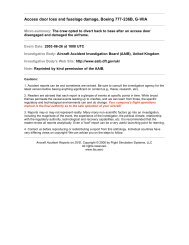Executive Summary - Fss.aero
Executive Summary - Fss.aero
Executive Summary - Fss.aero
You also want an ePaper? Increase the reach of your titles
YUMPU automatically turns print PDFs into web optimized ePapers that Google loves.
extractor, cardiac pads to resuscitate the heart beat again. The flight attendant<br />
said that<br />
there was no laryngoscope, oxygen tubes or phlegm extractor.<br />
While the chief flight attendant kept on doing the chest massage of CPR, the<br />
doctor on board gave instructions on artificial respiration and, with the help of a flight<br />
attendant (4L) who was a registered nurse and kept on checking the captain's<br />
pulse,<br />
breathing and pupils. After 20 minutes of CPR, the captain did throw dark-gray vomit.<br />
Figure 1.15.3-1 Main cabin and flight attendants' allocation<br />
The on-board emergency effort continued the CPR from 0825 to 0925, and then<br />
the task was taken over by the MinShen Hospital medical team, CKS Airport.<br />
The doctor on board let MinShen Hospital medical team take over the first-aid<br />
effort and said that the captain was in shock condition after the aircraft came to a stop.<br />
1.15.4 First aid after landing<br />
At 0850, the aircraft landed at CKS Airport's Runway 05 Left and was towed to<br />
parking bay 608 at 0920. When MinShen Hospital medical team went on board the<br />
aircraft,<br />
the captain showed no response at all and his mydriasis had no neck pulse.<br />
Laryngoscope was used and oxygen tube inserted while serum was applied at the<br />
same time as the CPR effort was carried on. The doctor of MinShen Hospital said that<br />
because of the confined space on board and no response of the patient during the<br />
12



